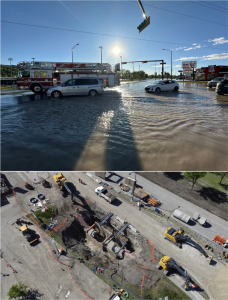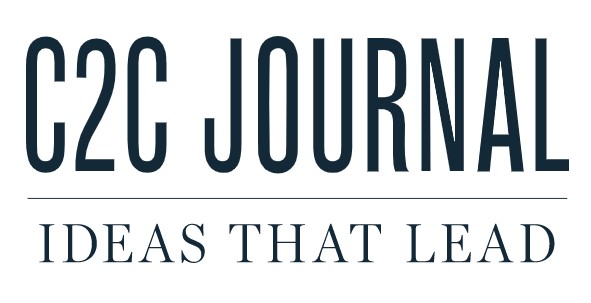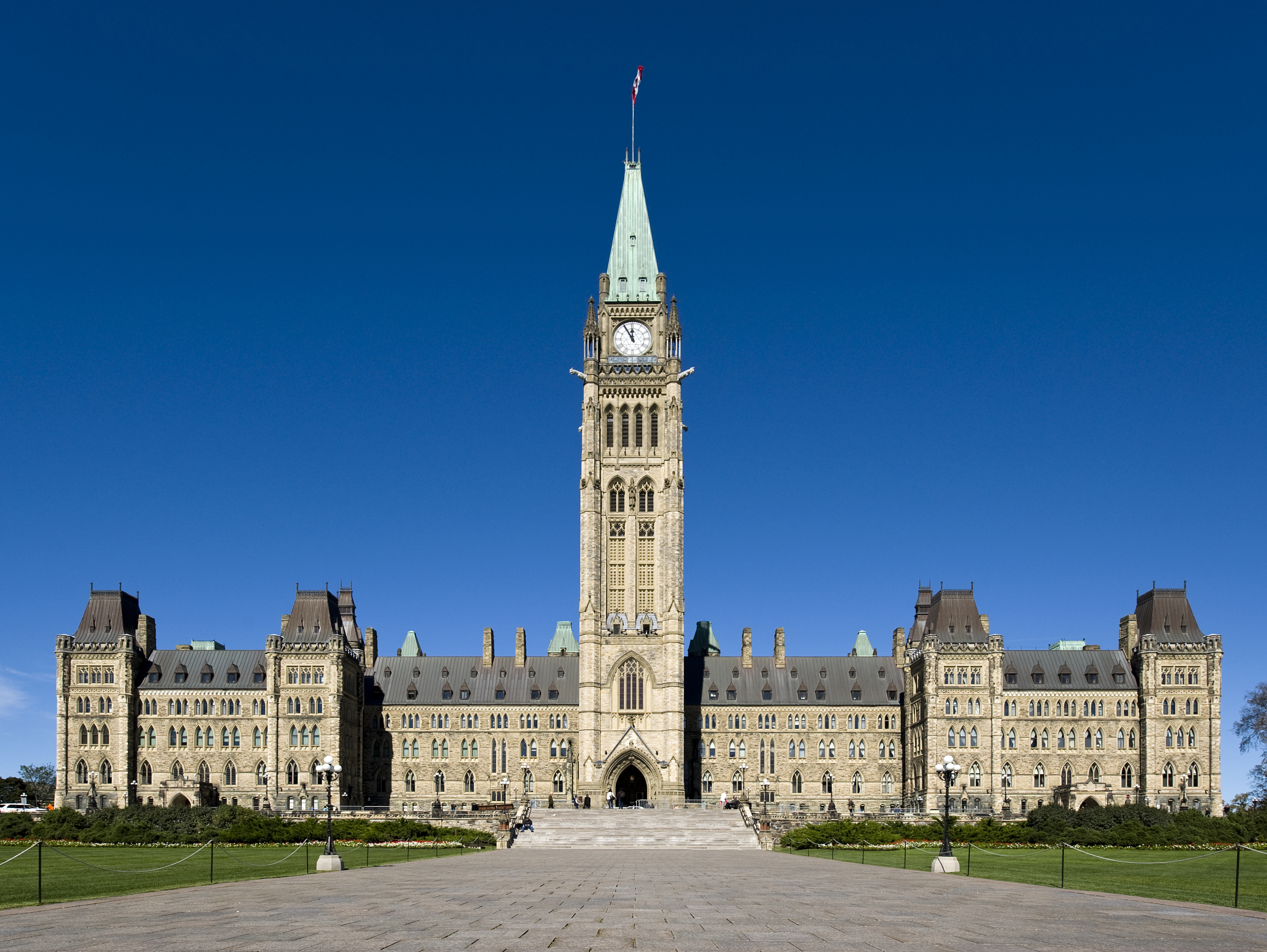As the enormous task forces of the U.S. Navy steamed westward across the Pacific Ocean in the final year of the Second World War, aiming ultimately for Japan but with some of the most vicious fighting still to come on islands like Okinawa and Iwo Jima, commanding admirals issued orders that any man who fell overboard would be left behind. No ship was to slow down for search-and-rescue; nothing was to get in the way of the mission. Several weeks ago, during one of the Stanley Cup semi-final games, a player was hit hard, fell to the ice, got up with difficulty, hobbled towards the bench and disappeared down the “tunnel”. The game went on, uninterrupted. Here too, the mission – entertaining millions – took precedence.
But when two municipal workers on a crew attempting to repair a catastrophic infrastructure failure in a major North American city are injured, the work immediately halts. Although the broken item serves a function vital to civilization and life itself, the mission of restoring water supply as quickly as possible becomes secondary. This happened 10 days ago, a week after the rupture of a high-pressure water main in Calgary had sent water shooting up out of busy 16th Avenue, triggering frantic 911 calls and initiating a “one week” repair saga that as of this writing is still weeks from completion.

Mission failure: The rupture of Calgary’s high-pressure water main on June 5 flooded 16th Avenue and threatened the city’s water supply; repairs were halted for a day after two workers were injured, an excess of caution that led to anger and frustration over the city’s basic competence. (Sources of photos: (top) Acton Clarkin/CBC; (bottom) CTV News)
The two injured workers were taken to hospital (thankfully, with non-life-threatening injuries) and the repair work eventually resumed the next day. But the interruption, piled atop days of confusing, contradictory, self-serving and at times seemingly false explanations and promises from senior city officials and embattled mayor Jyoti Gondek, generated further mistrust and anger among Calgarians over their city bureaucracy’s inability to operate the basics and get things fixed when something breaks down. The safety stand-down came on the very day the city had originally promised to restore water service, a time when every hour was precious, when the sacrifices by city residents and businesses were still bearable, when a return to normality seemed imminent. So why imperil the mission with nearly 24 hours of navel-gazing?
Though soon forgotten as new problems arose, the decision is emblematic of governments’ misplaced priorities, subordination of their core mission to their social policy fetishes and confusion over whose interests they exist to serve. Governing a city appears to have become primarily about keeping city workers, senior officials and elected politicians happy. Above all, to shield them against real accountability. Residents and businesses – the people who vote and pay the bills – are basically problems to be managed.
A story full of holes: City officials said the water main had been inspected and tested regularly, and that no leaks had been found; experts pointed out a catastrophic breakage of the line’s multi-layered structure would not likely begin with small leaks – and it emerged the line had not actually been drained and inspected since 2007. (Sources: (left photo) The City of Calgary Newsroom; (right image) The City of Calgary Newsroom)
Gondek, for her part, extended her track record of blaming anyone but herself by claiming the disaster could have been averted if only Alberta’s UCP government had “paid enough attention” and not denied Calgary the money it desperately needed for preventative maintenance and repair. The implications of her claim didn’t quite gibe with city officials’ assurances that the line was considered just fine. And Alberta Premier Danielle Smith shot back that Gondek “has never asked us for funding to repair their water supply infrastructure,” and that the province is providing the city with $224 million to allocate as it pleases. Others noted it was never a question of money at all, because Calgary has generated successive annual budget surpluses but either spends those funds on more congenial pursuits or carries them over into future years.
Still, for a few days it seemed as if water service would be restored within, or very soon after, the promised one week. But on June 15 it was announced that line inspections (which apparently had occurred in the physical world and not merely in city officials’ media narrative) had found five more “hot spots” – i.e., potentially calamitous weaknesses. The repair timeframe was abruptly extended to three to five weeks, well into July. And with that, the City of Calgary declared a State of Local Emergency.
There is an emergency in Calgary – and virtually every city across North America and the Western world. At least two types of emergency, actually. The first type is the open, at times almost gleeful refusal to focus on the basic responsibilities of municipal government. Such as paving roads – Calgary’s are notoriously cracked and potholed – instead of removing lanes from busy thoroughfares and lowering speed limits in order to create still more unused bike lanes. Or ensuring that public transit facilities are clean and safe for law-abiding users, as opposed to all-but abandoning buses and C-Trains to drug addicts, while still pushing for funding of the next multi-billion-dollar transit line.
Many Calgarians have grown exasperated at such neglect and indifference, and quite a few are paying close attention. One letter-writer to the Calgary Herald pointed out that aging water infrastructure is a well-known problem in civic government circles, noting that the Alberta Urban Municipalities Association in 2014 set the goal of getting “unaccounted for” water down to 10 percent of total treatment plant outflow. While that figure seems unsettling enough, five years later a third-party engineering report estimated that Calgary was losing 17-28 percent of all its treated water. While some of that was for fighting fires and some was theft, the majority was believed to be leakage. That makes it sound like very few of those “100-year-rated” lines had ever been inspected, tested and confirmed sound.
The staggering water volume implied by that percentage range – and worse, the toleration of the problem for at least a decade – evokes a deeply disturbing decrepitude analogous to the massive leakage from oil pipelines in the dying years of the Soviet Union or the chronic tapping of oil pipelines by thieves in Nigeria. Neither is a place Calgary should emulate. The 17-28 percent range is also, coincidentally, similar to the amount of water Calgarians are now expected to conserve. If Calgary’s pipes didn’t leak, we’d hardly have to conserve water at all even with the city’s biggest water main down. “It’s time,” declared attentive letter-writer Guy Buchanan, “to rethink projects such as the Green Line LRT project and concentrate the $4-billion of reserves that council is hoarding to fortify life-sustaining infrastructure.”
This fiasco is, unfortunately, just one example of an operating mentality averse to focusing on dreary real-world problems. The City of Calgary also hates clearing roads in winter and, every year, whenever it snows hard, the warming Chinook winds fail to arrive on schedule and streets remain snowbound, chaos erupts and the excuse – every single time – is that the city lacks the money and equipment needed to plough its roads and, in any case, does not have a “bare pavement policy.” These words come out of the city spokesperson’s mouth right about the time that private-sector operators wrap up clearing streets and sidewalks at private condo developments and old folks’ homes, have restored Walmart and Safeway parking lots to pristine expanses of black pavement, and can all head to Timmy’s for a well-deserved round of late-morning dark roasts and crullers.




